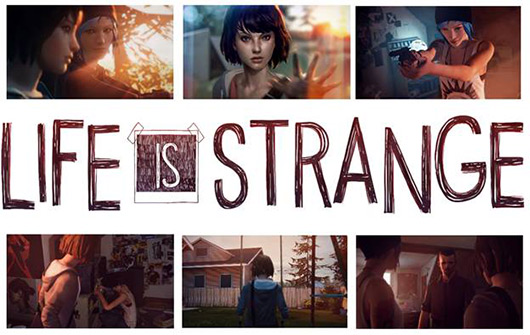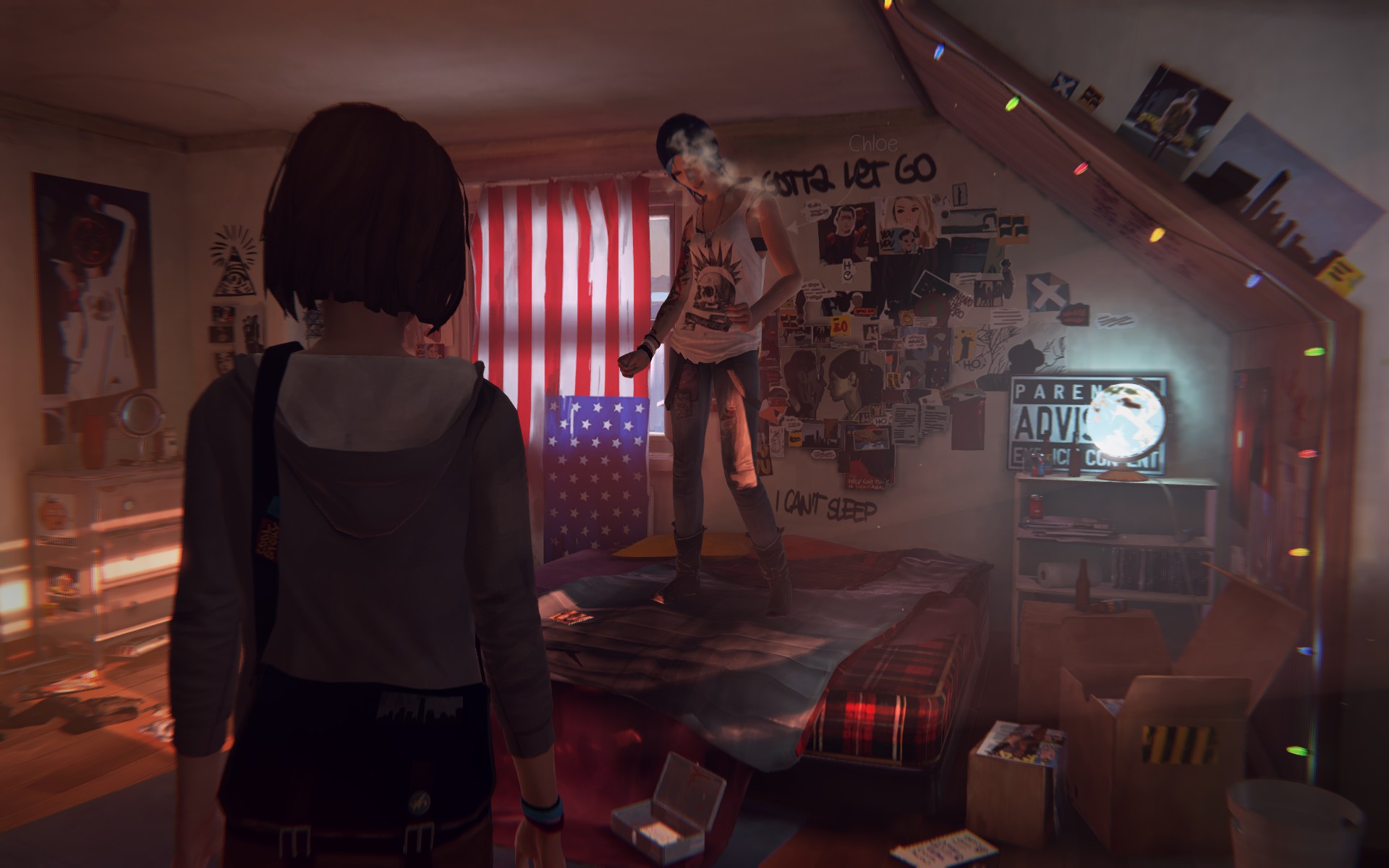Tuesday, 31 March 2015
Video Game Review: Life is Strange: Episode 1 & 2
Title: Life is Strange: Episodes 1 & 2
Developers: Dontnod Entertainment
Publisher: Square Enix
Genre: Graphic Adventure
Platforms: PC, Playstation 3, Playstation 4, Xbox 360, Xbox One
Reviewed On: Xbox One
Price: $4.99 per episode, $19.99 for all current and future episodes
The most striking thing about Life is Strange, a new episodic series created in a similar vain to the recent Telltale releases, is the attention paid to the little details of the in-game world. Small things, like how all in-game sound is muted, except for music, when the protagonist puts in earbuds, or how looking at the writings and drawings of each person's whiteboard in the dorms gives an idea of their reputation and character, really bring the world of Arcadia Bay to life. While the game has a few technical issues that appear, most likely due to budget constraints, and the dialogue can feel a bit forced at times, it's an amazing case study of how important environmental details can be for a in-game world.
In Life is Strange, you take control of a high school girl named Max, an artsy loner in a school full of drama and hipsters. As you progress through the game, you have a variety of dialogue choices for how you interact with each character. These choices allow you to morph Max's personality, and can change how people see and react to you. Along with dialogue choices, there are also several bigger choices to be made, that have consequences later on in the story, mostly in the form of branching dialogues, but there are a few that can have rather dramatic waves, particularly in Episode 2.
You may be thinking that this is just a high school version of a Telltale game, but Life is Strange has a special trick up its sleeve that kinda turns the choice-and-consequence gameplay format on its head, Max has the ability to travel backwards in time, and remake choices she made. Max also retains information she has found and small items she takes with her, allowing her to make different choices based on found information.
Going back to the little details, the game makes sure that you are never fully confident you made the right choice, by making sure Max herself is never confident. Every big choice you make, and are allowed to reverse time in, Max will have a little inner dialogue, asking if that was the right choice. It's a fantastic way of getting us more into the mindset of Max, and adds a lot to the games, for such a tiny thing. The game also shys away from showing black-and-white outcomes for each choice, nearly every one of the choices presented have a fairly grey outcome, and you will never be fully confident you made the right one, just like Max.
These little touches also apply to the characters in Life is Strange. At first, it seems like a typical hodge-podge of high school stereotypes. The jock, the punk, the prep, they all seem to appear here, but all of them (well, most) get fleshed out so well with little details about their personality. Seeing the college rejection letters of the mean prep can give you a better appreciation of why she's so mean and bitter, or seeing the terrible things written on a dorm whiteboard based on the religious beliefs of one of the girls gives you an idea of how tormented she may feel. This also comes through in the dialogue, and if you talk to each character, you can see their individual personalities shine through.
The environments of the game also step up to this challenge, and do a damn fine job of it. Looking around the dorms can really shine a light on a characters motivations and actions. Seeing the rejection letters held onto by the mean prep, or the terrible things written on a girl's room whiteboard based on her religious beliefs can really show you a side of the person in a way dialogue can't. In fact, later on in Episode 1, an entire level is dedicated to a main character, showing how a once happy home for her has changed into something less than happy. This level of dedication to environmental storytelling is completely welcome to this sub-genre, and a breath of fresh air.
Unfortunately, the game does have its flaws that need to be discussed. While the artstyle of the game is great, and can lead to some gorgeous sights, the animations of the characters can be sorta robotic and jarring to see. Fortunately, the voice acting is fantastic, the developers have stated that ensuring quality voice acting was more important to them than ensuring quality lip-syncing, and I wholeheartedly agree. Something a bit more of an issue is the dialogue in the game. For the most part, it's great, but it sometimes tries too hard to be hip and cool with the slang, which can feel forced and awkward at times. I noticed this as an issue in Episode 1, but less so in Episode 2, so it seems the developers recognized this issue.
Video games are growing as a form of media, and arguably, art. Life is Strange is a sign of this, with its merging of gameplay with great writing, and tackling the different themes of adolescence, identity, and memories. It does have it's issues, but the format of its releases, with several episodes released over the course of months, it has a unique opportunity to tackle those issues, and improve itself with each episode. If you always thought that video games are just mindless violence, or that they can't deal with heavy themes, then give Life is Strange a try, and be proven wrong.
Subscribe to:
Post Comments (Atom)





his is my first time i visit here. I found so many entertaining stuff in your blog, especially its discussion. From the tons of comments on your articles, I guess I am not the only one having all the leisure here! Keep up the excellent work.
ReplyDeleteElo boosting
This is a great inspiring article.I am pretty much pleased with your good work.You put really very helpful information. Keep it up. Keep blogging. Looking to reading your next post.
ReplyDeletevital-eloboost.com